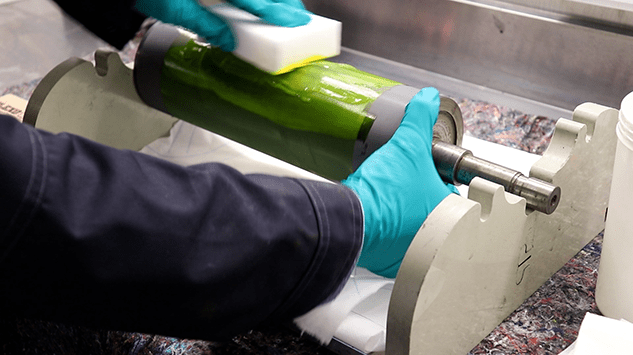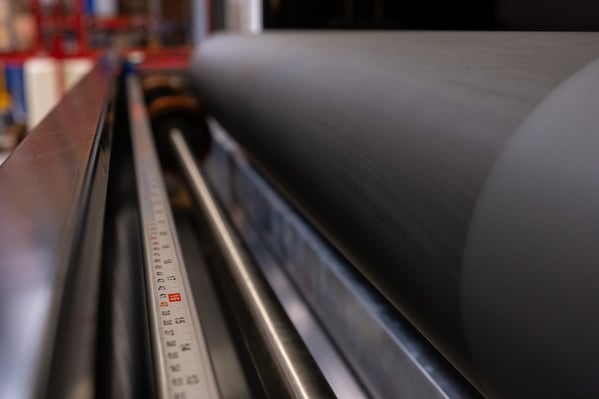Manual vs. automated anilox cleaning – what is there to know? The differences between manual and automated cleaning are numerous and it is beneficial to know all the information about working with both methods. What works for you might be different from what works for another converter.

Manual cleaning – PROS
Low overall expenses
Manual cleaning has very low cost. There are low expenses for labor and materials, and it is very easy to manage. However, the price for manual cleaning can accumulate over time if the production grows.
Great as a supplement
Manual cleaning often gets a bad reputation for being unhealthy, ineffective and time consuming. However, if you do supplemental manual cleaning of your aniloxes, when you already have an automated cleaning system — it is great. And it can be necessary if you want the absolute best printing production.
Manual cleaning – CONS
Inconsistent results
While manual cleaning seems like a good choice there are pit falls that you should avoid. One of these is the impossible task of checking whether your anilox is clean enough for the print job. An anilox is round, long and consists of billions of small cells that are impossible to check with the naked eye. Read more about this - click here.
Time consuming
Manual cleaning is a slow process which is very time consuming and can create bottlenecks in your production. You might not realize it, but it could be holding you back from scaling up your production and doing more printing jobs.
Health and safety issues
Without proper health and safety equipment – manual cleaning can become a liability. In the end you might lose employees and the employees might get sick.

Automated Cleaning – PROS
Quick and gentle cleaning process
The Flexo Wash system is based on liquid and high-pressure water. Therefore, the system is effective even for high line aniloxes. The quick and gentle cleaning process leaves the aniloxes totally clean and ready for immediate use after just 10-20 minutes of cleaning without causing any wear or tear to the anilox.
Ensures high and consistent printing output
Automated cleaning makes it possible to keep your aniloxes clean then ensuring a high and consistent print quality and a long lifetime of the aniloxes.
ECO friendly
The FW Anilox Cleaners work with low impact cleaning liquid, which is specially made for deep cleaning of aniloxes used with all types of ink. The water from the high-pressure rinse is automatically led directly to the drain, into a tank for re-use or to one of our water treatment units.
Automated Cleaning – Cons
High start-up cost
Investing in an automated cleaning unit can be expensive at first glance. However, what you should really take notice of is your return on investment. Does that initial big investment pay off and how long will it take? Read more about what affects your ROI – click here.
What to consider
When you should invest in a new cleaning process? As a converter, you need to consider which solution makes sense to you by asking yourself a few questions:
- How much time do I spend on cleaning aniloxes?
- How large or limited is my anilox inventory?
- How many aniloxes do I need to clean per cycle?
- Where would I like to place the anilox?
- What connections do I have available?
- What is my budget for cleaning equipment and running cost?
- Is my production ready to upscale?
- How many of my aniloxes get damaged or worn out due to manual cleaning per year?
What to choose
When it comes to cleaning of your aniloxes it should never be about choosing one method over the other. It should be about choosing a complete solution that fits your production best and is scalable for the future if your production grows.
Automated and Manual cleaning supplement each other. Where automated cleaning is for deep cleaning of you aniloxes, manual cleaning is for occasionally daily cleaning of an anilox.
Read more about our products for automated anilox cleaning - click here!
